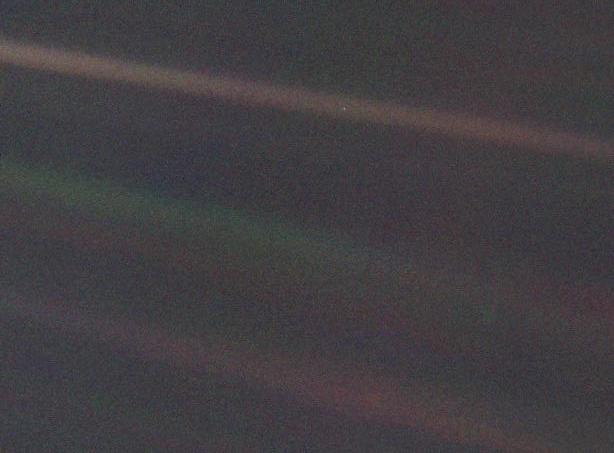Podcast: Play in new window | Download
Subscribe: Apple Podcasts | Spotify | Email | RSS | More
In this episode, we celebrate two significant anniversaries! This month is the 3rd anniversary of Locally Sourced Science, and we celebrate it with a new music and voice introduction by Joe Lewis. We also celebrate the 30th anniversary of the famous photograph of planet Earth taken from the farthest point ever. This photo that Carl Sagan titled “The Pale Blue Dot” was taken by Voyager I on February 14, 1990.
To celebrate this anniversary, Mark Sarvary spoke with Lisa Kaltenegger, director of the Carl Sagan Institute, and with writer and director Nick Sagan, Carl Sagan’s son. Kaltenegger talks about the Voyager 1 mission, the Pale Blue Dot picture, and the Carl Sagan Institute. Nick Sagan spoke to us about the legacy of his father, who was both a scientist and a storyteller.
Sagan wrote in his “Pale Blue Dot” book: “That’s here. That’s home. That’s us. On it everyone you love, everyone you know, everyone you ever heard of, every human being who ever was, lived out their lives. … There is perhaps no better demonstration of the folly of human conceits than this distant image of our tiny world.”
Image Caption
This narrow-angle color image of the Earth, dubbed ‘Pale Blue Dot’, is a part of the first ever ‘portrait’ of the solar system taken by Voyager 1. The spacecraft acquired a total of 60 frames for a mosaic of the solar system from a distance of more than 4 billion miles from Earth and about 32 degrees above the ecliptic. From Voyager’s great distance Earth is a mere point of light, less than the size of a picture element even in the narrow-angle camera. Earth was a crescent only 0.12 pixel in size. Coincidentally, Earth lies right in the center of one of the scattered light rays resulting from taking the image so close to the sun. This blown-up image of the Earth was taken through three color filters — violet, blue and green — and recombined to produce the color image. The background features in the image are artifacts resulting from the magnification.
Image Credit: NASA/JPL
Producer: Esther Racoosin
Interviews: Mark Sarvary
Science News: Liz Mahood
Science Events Calendar: Esther Racoosin
